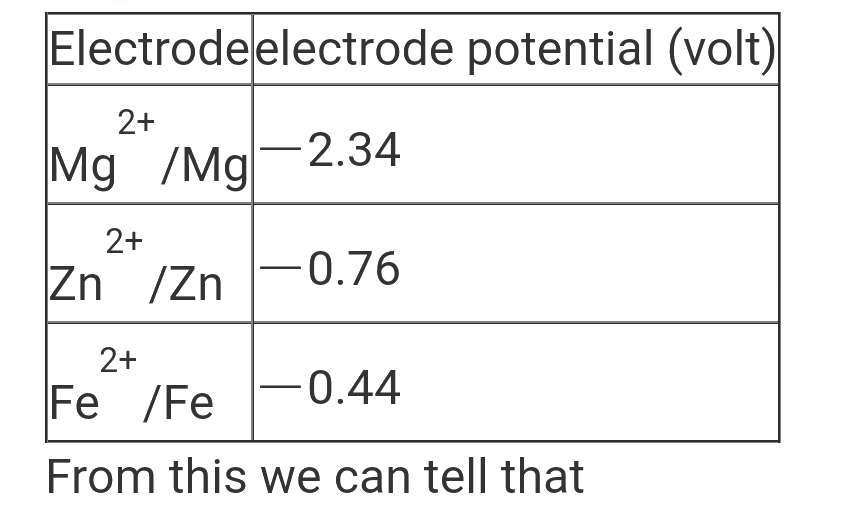Standard reduction potential of most of the transition elements is generally
negative
positive
zero
None of the above
The correct Answer is:A
To solve the question regarding the standard reduction potential of most transition elements, we can follow these steps:
Step 1: Understand Standard Reduction Potential
Standard reduction potential (E°) is a measure of the tendency of a chemical species to be reduced, which means gaining electrons. A positive value indicates a strong tendency to gain electrons, while a negative value indicates a weaker tendency.
Hint: Recall that standard reduction potential values can be positive, negative, or zero, and relate to the stability of the ion in solution.
Step 2: Analyze Transition Elements
Transition elements are known for their unique properties, including their ability to form various oxidation states and complex ions. They typically have partially filled d-orbitals.
Hint: Consider the electronic configuration of transition metals and how it affects their reactivity and ionization energy.
Step 3: Consider Ionization Energy and Heat of Sublimation
Transition elements generally have high ionization energies and high heats of sublimation. These factors contribute to their standard reduction potentials. High ionization energy means that it requires more energy to remove electrons, which can lead to lower reduction potentials.
Hint: Think about how higher ionization energy affects the stability of the reduced form of the metal.
Step 4: Evaluate Heat of Hydration
The heat of hydration is the energy released when ions are solvated by water molecules. For transition metals, the high heat of hydration can offset the high ionization energy and heat of sublimation, but it often does not fully compensate for them.
Hint: Remember that the balance between ionization energy and heat of hydration is crucial in determining the overall standard reduction potential.
Step 5: Conclusion
Considering all these factors, most transition elements exhibit low negative values for their standard reduction potentials. This means they are less likely to be reduced compared to other elements with higher positive potentials.
Final Answer: The standard reduction potential of most transition elements is generally negative.
Standard reduction potential (E°) is a measure of the tendency of a chemical species to be reduced, which means gaining electrons. A positive value indicates a strong tendency to gain electrons, while a negative value indicates a weaker tendency.
Transition elements are known for their unique properties, including their ability to form various oxidation states and complex ions. They typically have partially filled d-orbitals.
Transition elements generally have high ionization energies and high heats of sublimation. These factors contribute to their standard reduction potentials. High ionization energy means that it requires more energy to remove electrons, which can lead to lower reduction potentials.
The heat of hydration is the energy released when ions are solvated by water molecules. For transition metals, the high heat of hydration can offset the high ionization energy and heat of sublimation, but it often does not fully compensate for them.
Considering all these factors, most transition elements exhibit low negative values for their standard reduction potentials. This means they are less likely to be reduced compared to other elements with higher positive potentials.
Similar Questions
Standard reduction potential is calculated at
View SolutionWhy are transition elements so named ?
View SolutionWhy are compounds of transition elements generally coloured ?
View SolutionStandard reduction potential (SRP) of fluorine is highest. Comment
View SolutionThe electronic configuration of inner transition elements is
View SolutionThe standard reduction potential at 298 K for single electrodes are given below.l

From this we can tell that
View SolutionExplain the following
(a) Zr and Hf exhibit similar properties.
(b) Most of the transition elements show large number of oxidation states.
View SolutionThe electronic configuration of the fourth transition element is
View SolutionIf the orders of reduction potential is then :
View SolutionWhat is the standard reduction potential of the cathode of a galvanic cell if the standard EMF of the cell and the standard reduction potential of the anode are 2.71 and -2.37 respectively?
View Solution
